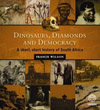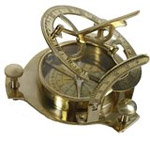Maritime Nations
° Algoa Bay (Port Elizabeth) ° Angola ° Cape Town ° Durban ° East London ° Francistown ° Johannesburg (Inland) ° Port Elizabeth ° Pretoria (Inland) ° Richards Bay ° Saldanha
South Africa
Before the opening of the Suez Canal in the mid-nineteenth century, the most direct route for European ships to the East was to sail down along the west coast of Africa, round the Cape of Good Hope, up along the east coast and then across the Indian Ocean to India, Malaysia and Indonesia.
One of the first and most important stops en route was Table Bay, near the Cape of Good Hope at the tip of southern Africa. Initially established as a victualling base by the Dutch East Indian Company, the fertility of the land and the utility of the harbour encouraged the area's further development by Europeans.
December 1, 1859, Cape and Natal News, London, United Kingdom
IMMIGRATION. During the month the Lord Raglan has arrived at Cape Town with immigrants, including a number of labourers for the Cape Town and Wellington line of railway. Three other vessels have sailed for that port, one or two of which will probably arrive before the mail leaves. Two vessels are also nearly due at Port Elizabeth. Mr. Field appears to have been executing his duty in a much more energetic and efficient manner since the recent exposures; and we are glad to hear that the permit cases, a large number' of which have gone home, are receiving more prompt attention at his hands. The late drought, which has put the colony back in so many other respects, although it has not thrown any of the immigrants who have already arrived out of employment, has exerted a prejudicial effect upon the enterprise which should prompt the colonists to seek for and employ the various kinds of European labour.

Still when it is borne in mind that many of those who have arrived in the colony have already passed through it to the countries beyond, and that this is still going on, it will be seen that South Africa offers a larger field for immigration than might at first be supposed. We have no fear for the success of those who are already on the way, and believe that the colony will find employment for as many as its means will enable it to obtain. Agricultural labourers will soon be in considerable demand. Graaff-Reinet Herald.
December 21, 1870, Wisconsin State Journal, Madison, Wisconsin
Cape of Good Hope Diamond Fever--
Graphic Picture of a Great Find--Diamonds Still Abundant
The South African papers still teem with glowing accounts of the new diamond fields in the Vaal Valley. The Orange Free State fields, adjoining Cape Colony, have so far proved prolific. The Cape Aryus, published at Cape Town, says: "In our last summary for the English mail, we pointed to the fact that not fewer than 883 diamonds, the estimate value of which was put down at 80,800, were exported from this port during the month of September. By the Northern, which leaves tomorrow, further shipments of diamonds will be made. Among others, we may state that Messrs. Blaine & Co., are sending home by this opportunity fifty-five diamonds of an estimated value of 9,000, Among these are two perfect gems.
Sorting, Washing, and Digging at the South African Diamond Fields

One, the Roos diamond -- the Star of Hebron -- is a magnificent stone stone of 60-5/8 carats, of an amber color, beautifully shaped, and next to the "Star of South Africa," the largest and finest gem that has been exhibited here. The other is the "Wippenaar's Company " diamond of 26-5/8 carats, consigned through Messrs. Levy, Markus & Co., of Allwal North, and also a very fine stone of an amber tint. "The other fifty-three diamonds are of various weights, from 6-1/2 carats downward.
Messrs. Mackie, Dunn & Co. have just received about seventy diamonds of various sizes and weights. Among them is a fine stone of the first water, weighing 26-3/4 carats. They are not shipping them by this steamer, but are waiting for a further lot of about seventy, soon expected. Messrs. A. Mosenthal & Co. are expecting to receive, in a few days, upward of ,1000 diamonds, which will be sent to London in the course of a month or so. We have one more fact to give. From the 1st of January 1869, to the 30th of September, 1870, there were exported, as per the customs returns, 1,712 diamonds, valued at 53,012."
August 11, 1899, London Daily Mail, London, United Kingdom
(From Our Own Correspondent.) Capetown, Aug. 10
1899. South Africa.

Public indignation here is intensified by the Raad's reported refusal to remove religious disabilities. Even the most moderate men openly favour the continuance of a policy of vigorous pressure. It is impossible to expect the Uitlanders to endure much longer the terrible strain which extracting reforms by inches entails. Loyalists demand that England's answer to the new commandeering law shall be sharp and decisive. Sir Alfred Midner's reply to the address from the Dutch Church, which is published by the Bond newspapers, is warmly appreciated by the Progressives. Much chagrin is felt here at documents of Imperial importance being constantly communicated to Bond organs by the Bondites. English susceptibilities in this respect are repeatedly ignored.
In 1886, the discovery of gold in the Witwatersrand resulted in a flood of immigrants or "uitlanders" to the area. This was a threat to the new political independence of the Transvaal and the Afrikaner identity. Kruger's government needed the revenue from the mines and didn't have any legitimate reason to remove these foreigners, but to grant them full political rights would negate everything he had fought for.
November 14, 1888, Colonies and India, London, Middlesex, United Kingdom
Cape Town, notwithstanding the fact that it is the capital, the seat of government, and the largest town in South Africa, is, from a sanitary point of view, in a truly disgraceful condition. The European population has deserted the town in favour of the suburbs. The Governor and the General, who are obliged to be in residence for part of the year, escape to Wynberg whenever it is possible. The efforts at drainage hitherto made have turned the bay into a sewage outfall: the breakwater having prevented the "scour" of the tide, the matters brought down by the drains undergo decomposition, poison the air, and develop endemic disease. Until this state of things is remedied it is our duty to see that invalids are not tempted to remain in the city.
1899. World's Fleet. Boston Daily Globe
Lloyds Register of Shipping gives the entire fleet of the world as 28,180 steamers and sailing vessels, with a total tonnage of 27,673,628, of which 39 perent are British.
| Great Britain | 10,990 vessels, total tonnage of 10,792,714 |
| United States | 3,010 vessels, total tonnage of 2,405,887 |
| Norway | 2,528 vessels, tonnage of 1,604,230 |
| Germany | 1,676 vessels, with a tonnage of 2,453,334, in which are included her particularly large ships. |
| Sweden | 1,408 vessels with a tonnage of 643, 527 |
| Italy | 1,150 vessels |
| France | 1,182 vessels |
For Historical Comparison
Top 10 Maritime Nations Ranked by Value (2017)
| Country | # of Vessels | Gross Tonnage (m) |
Total Value (USDbn) |
|
|---|---|---|---|---|
| 1 | Greece | 4,453 | 206.47 | $88.0 |
| 2 | Japan | 4,317 | 150.26 | $79.8 |
| 3 | China | 4,938 | 159.71 | $71.7 |
| 4 | USA | 2,399 | 55.92 | $46.5 |
| 5 | Singapore | 2,662 | 64.03 | $41.7 |
| 6 | Norway | 1,668 | 39.68 | $41.1 |
| 7 | Germany | 2,923 | 81.17 | $30.3 |
| 8 | UK | 883 | 28.78 | $24.3 |
| 9 | Denmark | 1,040 | 36.17 | $23.4 |
| 10 | South Korea | 1,484 | 49.88 | $20.1 |
| Total | 26,767 | 87.21 | $466.9 | |












 Copyright ~ 1998-2018.
Copyright ~ 1998-2018. 